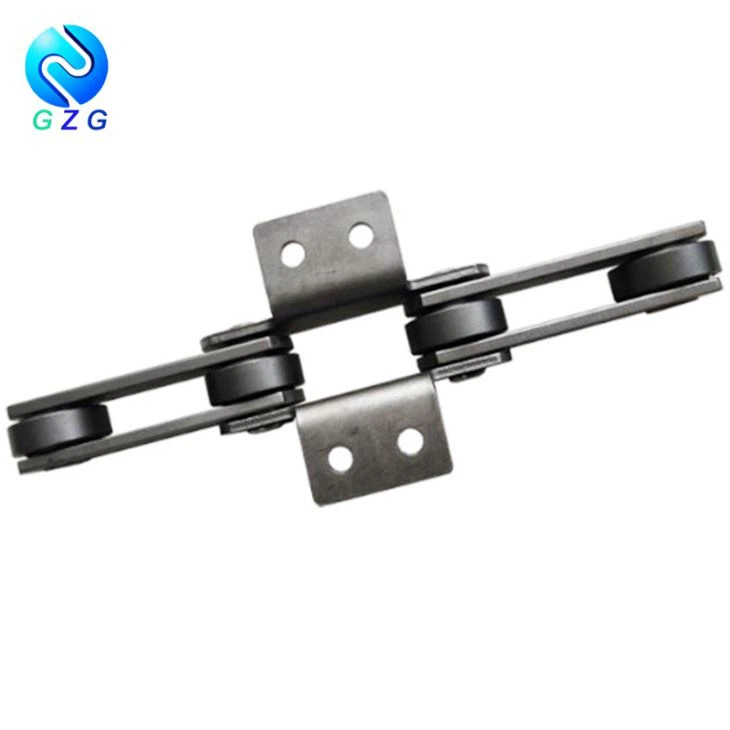In the dynamic landscape of the palm oil industry, understanding the price trends within the Palm Oil Chain is crucial for suppliers like myself. As a provider deeply entrenched in this sector, I've witnessed firsthand how various factors interplay to shape the cost of products at every stage of the chain. This blog post aims to delve into the intricate web of price trends in the Palm Oil Chain, offering insights based on my years of experience and industry knowledge.
The Basics of the Palm Oil Chain
Before we explore the price trends, it's essential to understand the components of the Palm Oil Chain. It encompasses everything from the cultivation of oil palm trees to the production of finished palm oil products. The chain includes processes such as harvesting, transporting, processing, and refining, each of which has its own cost implications.
As a supplier, I offer a range of products tailored to the needs of the palm oil industry. For instance, Palm Oil Conveyor Chains are essential for the efficient movement of palm fruits during the harvesting and processing stages. These chains are designed to withstand the harsh conditions of the palm oil environment, including exposure to moisture, dirt, and heavy loads.
Another product in my portfolio is Palm Oil Chains with Straight Plate. These chains are known for their durability and reliability, making them a popular choice for various applications in the palm oil industry. They are used in conveyor systems, crushers, and other equipment where smooth and efficient operation is crucial.
Additionally, I provide Palm Oil Chains with Hollow Pin Type. These chains offer flexibility and ease of installation, making them suitable for specific applications where customization is required. They are often used in automated systems and machinery that require precise movement and control.
Factors Influencing Price Trends in the Palm Oil Chain
Several factors contribute to the price trends in the Palm Oil Chain. Let's take a closer look at some of the key elements:
Supply and Demand
The basic economic principle of supply and demand plays a significant role in determining the prices of palm oil and related products. When the demand for palm oil increases, whether due to growing consumption in the food industry, biofuel production, or other applications, the prices tend to rise. Conversely, if the supply exceeds the demand, prices may decline.
As a supplier, I closely monitor the market demand for my products. For example, if there is a surge in the construction of new palm oil processing plants, the demand for conveyor chains and other equipment is likely to increase. This can lead to upward pressure on prices as suppliers struggle to meet the growing demand.
Production Costs
The cost of producing palm oil and its associated products is another crucial factor influencing price trends. Production costs include expenses such as labor, raw materials, energy, and transportation. Fluctuations in these costs can have a direct impact on the final prices of palm oil products.
For instance, if the price of labor increases due to minimum wage hikes or labor shortages, the production costs for palm oil processors will rise. This, in turn, may lead to higher prices for palm oil and related products. Similarly, an increase in the cost of raw materials, such as steel for manufacturing chains, can also drive up the prices of my products.
Weather Conditions
Weather conditions can have a significant impact on the palm oil industry. Droughts, floods, and extreme temperatures can affect the growth and productivity of oil palm trees, leading to a decrease in the supply of palm fruits. This can result in higher prices for palm oil as the available supply becomes scarce.
As a supplier, I am aware of the potential impact of weather conditions on my customers' operations. I work closely with them to ensure that they have the necessary equipment and supplies to mitigate the effects of adverse weather conditions. For example, I may recommend the use of weather-resistant chains or provide maintenance services to ensure the proper functioning of equipment during challenging weather.
Government Policies and Regulations
Government policies and regulations can also influence the price trends in the Palm Oil Chain. Policies related to trade, taxation, environmental protection, and labor can have a direct or indirect impact on the cost of production and the prices of palm oil products.
For example, import and export tariffs can affect the competitiveness of palm oil in the global market. If a country imposes high tariffs on palm oil imports, it can increase the cost of the product for consumers in that country. Similarly, environmental regulations can require palm oil producers to adopt more sustainable practices, which may increase their production costs and, consequently, the prices of palm oil products.
Historical Price Trends in the Palm Oil Chain
To gain a better understanding of the current price trends in the Palm Oil Chain, it's helpful to look at the historical data. Over the past few decades, the prices of palm oil have experienced significant fluctuations.
In the early 2000s, the price of palm oil was relatively stable, hovering around $200 - $300 per metric ton. However, starting in 2007, there was a sharp increase in prices, reaching a peak of over $1,200 per metric ton in 2008. This increase was primarily driven by a combination of factors, including rising demand for biofuels, poor weather conditions in major palm oil-producing countries, and speculation in the commodity markets.
After the 2008 peak, the prices of palm oil declined significantly, falling below $500 per metric ton in 2009. This decline was due to a combination of factors, including the global financial crisis, which led to a decrease in demand for palm oil, and an increase in the supply of palm oil as new plantations came into production.
In recent years, the prices of palm oil have been more volatile, fluctuating between $400 - $800 per metric ton. This volatility is mainly due to the ongoing factors such as supply and demand dynamics, production costs, and government policies.
Current Price Trends and Future Outlook
As of the time of writing, the prices of palm oil are experiencing some upward pressure. The demand for palm oil remains strong, particularly in the food and biofuel industries. At the same time, the supply of palm oil has been affected by factors such as weather conditions and labor shortages in some producing countries.
Looking ahead, the future outlook for the prices in the Palm Oil Chain is uncertain. On one hand, the growing demand for palm oil, especially in emerging economies, is likely to continue to support prices. On the other hand, the increasing focus on sustainability and the development of alternative sources of vegetable oils may pose challenges to the palm oil industry and potentially limit price increases.
As a supplier, I am committed to staying ahead of the market trends and providing my customers with high-quality products at competitive prices. I continuously monitor the market conditions and adjust my pricing strategies accordingly to ensure that I remain competitive in the industry.
Conclusion
In conclusion, the price trends in the Palm Oil Chain are influenced by a complex interplay of factors, including supply and demand, production costs, weather conditions, and government policies. As a supplier, I understand the importance of these factors and their impact on the prices of my products.
By offering a range of high-quality products such as Palm Oil Conveyor Chains, Palm Oil Chains with Straight Plate, and Palm Oil Chains with Hollow Pin Type, I aim to meet the diverse needs of my customers in the palm oil industry.
If you are in the palm oil industry and are looking for reliable and cost-effective solutions for your chain requirements, I invite you to reach out to me for a discussion. I am eager to understand your specific needs and provide you with the best possible products and services.


References
- Oil World Annual Reports
- United States Department of Agriculture (USDA) reports on palm oil
- Industry research papers on palm oil economics
